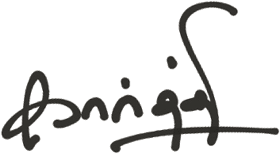A typical question that comes multiple times in my career clinic is, "what is that one thing I must possess to have a competitive advantage in the industry?"
My answer to that question is TASTEFULNESS. We hardly talk about this one virtue or aspect or faculty or sense or skill in the industry.
Wikipedia says tastefulness is the faculty or sense of discerning what is aesthetically pleasing or appropriate.
Taste starts as a skill for everyone of us. Slowly it becomes a part of our being over a period of time. The compounding gives designers (especially visual designers) a great competitive edge.
“A mind that is stretched by a new experience can never go back to its old dimensions.” —Oliver Wendell Holmes, Jr.
Here are 10 tips to develop your tastefulness as a designer:
Your taste develops in relativity and your exposure feeds relativity. By exposing yourself constantly to good, bad and the ugly, you start developing a sense that helps you discern what is better and what is not.
Tuning your sensory experience and sensory emotion to great experiences slowly makes you an aesthetician (yeah, that is a real word). These are people who appreciate aesthetics in all walks of life. They like things a certain way, they pay attention to details around the thing and they constantly think about how to make things aesthetically pleasing at all times. It comes from great sensory experience. Beware of becoming really obsessed with details in aesthetics and it can annoy the hell out of people around you.
Paying close attention to nature makes you ponder about colors, combinations, geometry, folds and symmetry (or lack of) in a way that makes you more curious. Trying to recreate a leaf using watercolor or photoshop will make you humble and grounded. This attention to detail makes you a keen observer and you learn a lot as a result.
In our man-made world, when you look at an object, try and look at all the available options in the spectrum. For example when you are looking for a women's purse look at Baggit and Louis Vutton and everything in between. Analyze what makes one standout compared to the other. Look for what aspects are focused by the maker. The same concept holds good for digital products as well. When you are looking for an app or a wearable, look at the entire spectrum and analyze deeply. Continuous audits with everything in life makes you a better analyzer and synthesiser. The new pair of eyes makes you a tasteful being over a period of time.
Continuous seeking and search expands taste. I interact with a number of designers and product folks everyday and I know how annoying it is to live with people who do not settle for what is available and keep the search on (I hear you 😜) but the search helps expand taste.
Paying attention to "What grabs your attention and why?" is a constant question you can journal about everyday to see what stands out in your environment, experience, social feeds, lives around you and more.
Thinking about ineffable emotions that a creator must have gone through in creating a piece of work is a great way to appreciate the artists behind the art or the product team behind the product.
Resonance is an important aspect of taste. It is hard to define in mere words but you'll know it when you see it and feel it. Keep track of how your resonance changes over a period of time. Are you stuck with the same brand forever? Are you willing to try new things? Are you limiting your exposure because there is resonance with one brand and you don't want to explore further are important questions to ask.
Taste develops by thinking deeply about the subjectivity and objectivity in a piece of work. Even identical looking screens or flat icons, you will be able to see when something is tastefully done and when something is not. The taste vocabulary develops by thinking about it and not just by seeing it.
Looking deeply into nuances of any object or a process makes you appreciate the details. These nuances are typically missed by a normal eye.
Taste is a skill and it can be nurtured. The 3Es that nurture taste are environment, exposure and experiments.
🥂 to taste!

